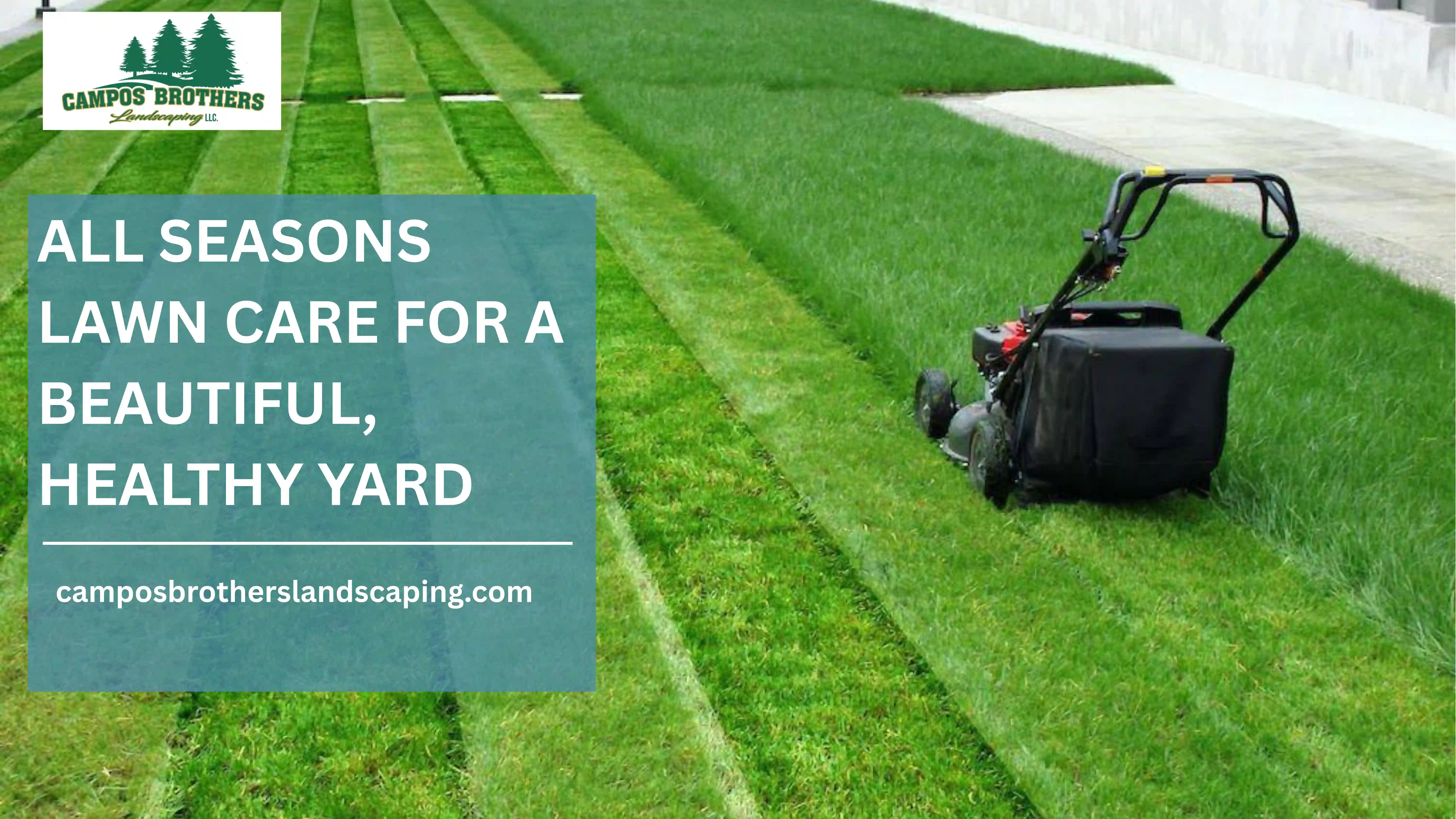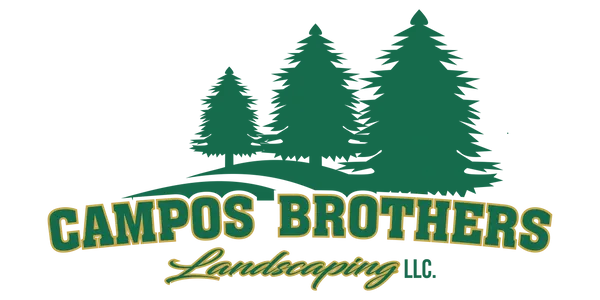All Seasons Lawn Care for a Beautiful, Healthy Yard Year-Round

A healthy lawn is a dynamic, living system, not a static feature. Its appearance in the summer is a direct result of care—or neglect—from the previous fall and spring. Viewing lawn management as a "spring-only" activity is a common mistake that often leads to frustration, pest issues, and weak turf. True lawn health is achieved through a consistent, year-round methodology with all four seasons of lawn care that addresses the turf's evolving needs through heat, cold, growth, and dormancy. This continuous cycle of stewardship is a significant commitment.
For many property owners who want a high-quality result without managing the complex variables themselves, the solution is often to engage professional services, such as those provided by firms like Campos Brothers Landscaping. Let’s break down the specific, season-by-season work required for a resilient lawn.
Understanding the "Why" of All Seasons Lawn Care
The core principle of all seasons lawn care is proactive, not reactive. Actions taken in one season are designed to set the stage for success in the next.
- Fall feeding high-potassium fertilizer, for example, doesn't just help the lawn in autumn; it directly fuels root storage for an earlier, healthier green-up the following spring.
- Spring aeration isn't just a spring task; it relieves compaction to help roots survive the stress of a hot, dry summer.
This approach treats the lawn as an ecosystem. By anticipating its needs, one can prevent many common problems—like crabgrass, fungal diseases, or grub damage—before they become severe infestations that require costly, reactive treatments.
The Lawn's Calendar: A Seasonal Breakdown
Each season presents unique challenges and opportunities. Here is a detailed look at the tasks involved in a seasonal lawn care program.
Spring (The Renewal Phase)
This is the season of active growth and repair. The goal is to help the lawn recover from winter and build strength for the summer.
- 1. Soil Testing: Before applying any products, a soil test is the most critical first step. Most turfgrasses thrive in a soil pH between 6.0 and 7.0. A test reveals this, along with any nutrient deficiencies (Nitrogen, Phosphorus, Potassium).
- 2. Cleanup and Thatch: A gentle raking removes winter debris. If the thatch layer—the dead, matted grass between the soil and the green blades—is more than 1/2 inch thick, dethatching may be necessary.
- 3. Aeration: Core aeration is vital for compacted soils, especially clay. It pulls plugs of soil out, allowing air, water, and nutrients to penetrate the root zone, encouraging deep root growth.
- 4. Overseeding: This is the ideal time to fill in bare patches, improving turf density.
- 5. Fertilization & Pre-emergents: Spring lawn care often involves applying a balanced, slow-release fertilizer (e.g., an NPK ratio of 20-5-10) to fuel growth. This is also the critical window to apply a pre-emergent herbicide, which stops crabgrass and other annual weeds before they can germinate.
Summer (The Stress Management Phase)
Summer is about survival. High heat and potential drought put immense stress on turf. The goal is to maintain health and resilience, not to force growth.
- 1. Watering: Deep and infrequent watering is the rule. Lawns need approximately 1 to 1.5 inches of water per week, including rainfall. It is far better to water for one long session (e.g., 45-60 minutes) once or twice a week than to water lightly every day. This encourages roots to grow deep in search of moisture. Potassium).
- 2. Mowing: Proper mowing is crucial. Never cut more than one-third of the grass blade at a time. For most cool-season grasses, maintaining a height of 3 to 4 inches provides shade for the soil, reduces water evaporation, and discourages weeds. Keep mower blades sharp; a dull blade tears grass, inviting disease.
- 3. Pest Control: Monitor for signs of grub or insect damage (e.g., irregular brown patches, increased bird activity).
Autumn (The Preparation Phase)
Fall is arguably the most important season out of all the four seasons of lawn care. The turf is recovering from summer stress and actively storing energy for winter.
- 1. Leaf Removal: Do not let leaves mat down on the lawn. A thick, wet layer of leaves blocks sunlight and air, creating a perfect environment for fungal diseases like snow mold.
- 2. Fertilization: This is the most important feeding of the year. In late fall, apply a "winterizer" fertilizer. This formula is low in nitrogen but high in phosphorus and potassium, which supports root growth and hardiness, not blade growth.
- 3. Continued Mowing: Continue to mow as long as the grass is growing. For the final cut of the season, you can mow slightly shorter (e.g., 2.5 inches) to help prevent matting.
- 4. Aeration & Seeding: For cool-season grasses, fall is the single best time to aerate and overseed. The soil is warm, the air is cool, and new seedlings will face less competition from weeds.
Winter (The Dormant Phase)
The lawn is sleeping, but it still needs protection.
- 1. Minimize Traffic: Avoid walking on frozen, dormant grass. The frozen blades are brittle and can easily break, leading to visible, damaged paths in the spring.
- 2. Salt & De-icer: Be cautious with ice-melt products. Rock salt (sodium chloride) is highly damaging to turf. If you must use a de-icer near the lawn, opt for safer, albeit more expensive, alternatives like calcium chloride or magnesium chloride.
- 3. Equipment Maintenance: This is the perfect time to service the lawnmower, sharpen blades, and prepare tools for spring.
Special Property Considerations
The principles of 4 seasons lawn care apply to all properties, but the scale and goals can differ.
- Commercial Lawn Care: For a commercial property, the lawn is part of its public image. The demands for commercial lawn care are often higher, prioritizing curb appeal, weed-free uniformity, and safety (e.g., proactive snow and ice management that doesn't kill the turf). These high-traffic areas also require more aggressive aeration and overseeding schedules.
- Backyard Landscaping: A lawn must coexist with other features. When planning backyard landscaping ideas, consider how new patios, trees, or flower beds will affect the lawn. New structures can change shade patterns, and hardscapes can alter water drainage, creating areas that may become too dry or too soggy.
The Alternative: Artificial Grass vs. Real Grass
For some, the year-round, scientific approach to lawn care is simply too much. This is where the artificial grass vs real grass debate begins. It's a valid alternative, but one with its own set of facts.
A Factual Comparison
| Feature | Real Grass (Turf) | Artificial Grass (Synthetic) |
|---|---|---|
| Maintenance | High (mowing, watering, feeding) | Low (rinsing, brushing) |
| Water Use | High; 1–1.5 inches per week | None, aside from occasional cleaning |
| Cost | Low initial cost; ongoing cost | Very high initial cost; low long-term cost |
| Environment | Produces oxygen, cools air, supports biodiversity | No water use, but is a plastic product, absorbs heat |
| Lifespan | Indefinite with proper care | Varies; see below |
Pros and Cons of Artificial Grass
The primary "pro" is the reduction in maintenance, which is why it's a popular choice in arid regions. The "cons" are significant: the high upfront installation cost, the fact that the surface can become extremely hot in direct sunlight, and the eventual need for disposal.
How long does artificial grass last?
The lifespan of synthetic turf is a major factor. Most high-quality installations are warrantied for 15 to 25 years. Durability is impacted by:
- UV Exposure: Constant, intense sun will degrade the material faster.
- Traffic: Heavy foot traffic will wear down the fibers.
- Material: Higher-quality (and more expensive) polyethylene or polypropylene fibers tend to last longer.
Foundational Lawn Maintenance Tips
Regardless of the season, these core lawn maintenance tips are always relevant:
- Know Your Soil: All health starts here. A simple soil test (often available through local university extensions) is the most valuable data you can have.
- Traffic: Heavy foot traffic will wear down the fibers.
- Right Grass, Right Place: In the US, this is critical. Fescue and Ryegrass thrive in cooler northern climates, while Zoysia and Bermuda grass are built for southern heat. Planting the wrong type is a recipe for failure.
- Proper Tools: A sharp mower blade, a clean spreader, and well-maintained equipment make every task more effective.
Conclusion
Achieving and maintaining a high-quality lawn is not a matter of seasonal luck; it is a year-round process of all seasons lawn care rooted in soil science, biology, and consistent effort. From the first soil test in spring to the final protective mow in fall, each action builds upon the last.
It is a continuous cycle that demands knowledge and persistence. This level of dedication is what defines true landscape stewardship, a commitment that property owners and the professionals they trust, like those at Campos Brothers LLC, understand to be the only way to achieve lasting, resilient results.
